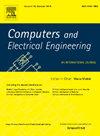基于前缀调优的机器阅读理解一致性学习框架
IF 4.9
3区 计算机科学
Q1 COMPUTER SCIENCE, HARDWARE & ARCHITECTURE
引用次数: 0
摘要
机器阅读理解(MRC)是一项传统但具有挑战性的自然语言处理任务。随着预训练语言模型的进步,一些方法已经取得了显著的成果。然而,无法回答的问题的广泛存在对MRC任务提出了新的挑战。特别是,在通用语料库上训练的语言模型通常会产生幻觉,并倾向于为无法回答的问题编造可信的答案。此外,大多数现有方法基于预训练的语言模型执行特定任务的微调,需要存储和更新大量参数。为了解决这些问题,我们提出了一个轻量级框架,称为基于前缀调优的一致性学习机阅读理解(PCMRC),以减轻模型幻觉并提高回答不可回答问题的准确性。PCMRC在结构上由两个相似的答案提取器和一个基于前缀调优的不可回答识别器组成。答案提取器提取正确答案和合理答案,而不可回答判别器生成全局概率,表明问题是否不可回答。然后引入一致性训练机制来平衡不可回答的概率与两个提取的答案。这样,所提出的PCMRC减轻了预训练语言模型的过度自信,减少了似是而非的答案对不可回答问题的干扰,最终提高了处理不可回答问题的准确性。在SQuAD2.0数据集上的实验表明,PCMRC在不可回答问题上的f1得分为88.9%,准确率为89.2%。值得注意的是,与微调相比,该方法只需要不到1%的参数,证明了其在MRC任务中的优越性和效率。本文章由计算机程序翻译,如有差异,请以英文原文为准。
Prefix-tuning-based Consistency Learning Framework for Machine Reading Comprehension with unanswerable questions
Machine reading comprehension (MRC) is a traditional yet challenging natural language processing task. With advancements in pre-trained language models, several approaches have achieved remarkable results. However, the widespread existence of unanswerable questions presents a new challenge to the MRC task. In particular, language models trained on a universal corpus commonly suffer from hallucinations, and tend to fabricate plausible answers to unanswerable questions. Moreover, most existing methods perform task-specific fine-tuning based on pre-trained language models, necessitating the storage and updating of a substantial number of parameters. To address these issues, we propose a lightweight framework called Prefix-tuning-based Consistency Learning Machine Reading Comprehension (PCMRC) to mitigate model hallucination and improve the accuracy of answering unanswerable questions. PCMRC is structurally composed of two similar answer extractors and a prefix-tuning-based unanswerable discriminator. The answer extractors extract both a correct answer and a plausible answer, while the unanswerable discriminator generates a global probability indicating whether the question is unanswerable. A consistency training mechanism is then introduced to balance the probability of unanswerability with the two extracted answers. In this way, the proposed PCMRC mitigates the overconfidence of pre-trained language models, reduces the interference of unanswerable questions by plausible answers, and ultimately improves the accuracy of handling unanswerable questions. Experiments on the SQuAD2.0 dataset show that PCMRC achieves an F1-score of 88.9% and an accuracy of 89.2% for unanswerable questions. Notably, this method requires fewer than 1% of the parameters compared to fine-tuning, demonstrating its superiority and efficiency in the MRC task.
求助全文
通过发布文献求助,成功后即可免费获取论文全文。
去求助
来源期刊

Computers & Electrical Engineering
工程技术-工程:电子与电气
CiteScore
9.20
自引率
7.00%
发文量
661
审稿时长
47 days
期刊介绍:
The impact of computers has nowhere been more revolutionary than in electrical engineering. The design, analysis, and operation of electrical and electronic systems are now dominated by computers, a transformation that has been motivated by the natural ease of interface between computers and electrical systems, and the promise of spectacular improvements in speed and efficiency.
Published since 1973, Computers & Electrical Engineering provides rapid publication of topical research into the integration of computer technology and computational techniques with electrical and electronic systems. The journal publishes papers featuring novel implementations of computers and computational techniques in areas like signal and image processing, high-performance computing, parallel processing, and communications. Special attention will be paid to papers describing innovative architectures, algorithms, and software tools.
 求助内容:
求助内容: 应助结果提醒方式:
应助结果提醒方式:


